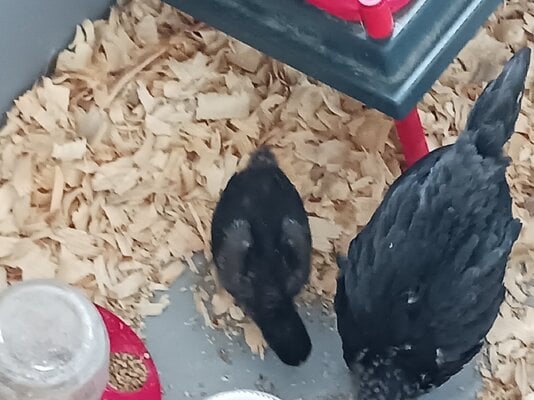LaurenRitz
Crowing
I have a JG x RIR cockerel, 17 weeks old. Hens are still in their first year but probably 8 months old. All eggs are showing fertilized, so I decided to set some of the eggs.
However, he also has a half sister in the group. I thought she was too young to be laying but there is a small brown egg in the set that doesn't match any of the others in color.
She is currently 15 weeks, also JG x RIR. She took entirely after the JG side, while the cockerel has more of the RIR traits, including early maturity. She is entirely black, black eyes, slow maturity. She looks like a pure JG.
I am keeping an eye on this egg. It's entirely possible that it isn't fertilized. I have never seen the cockerel mount her. However, if it does hatch is there any way I could differentiate the chick? Or is the mixing too difuse to tell?

However, he also has a half sister in the group. I thought she was too young to be laying but there is a small brown egg in the set that doesn't match any of the others in color.
She is currently 15 weeks, also JG x RIR. She took entirely after the JG side, while the cockerel has more of the RIR traits, including early maturity. She is entirely black, black eyes, slow maturity. She looks like a pure JG.
I am keeping an eye on this egg. It's entirely possible that it isn't fertilized. I have never seen the cockerel mount her. However, if it does hatch is there any way I could differentiate the chick? Or is the mixing too difuse to tell?
Attachments
Last edited:




